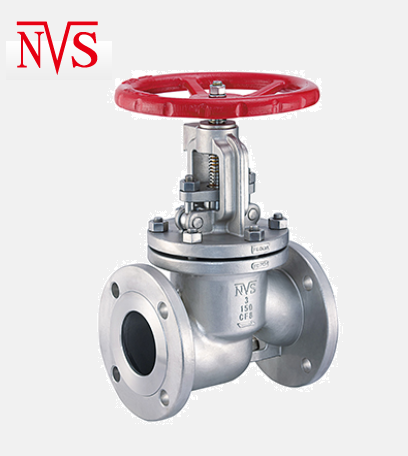Epoxy is an organic compound. It is made up of chains of carbon linked to other elements such as hydrogen, oxygen, or nitrogen. This link occurs via a covalent bond, in which the elements share a pair of electrons to stay together.
The epoxy term is a broad one. It can be used to describe the epoxide functional group, which is made up of a chain of carbon and oxygen atoms. Since functional groups determine the main characteristics of a molecule during a chemical reaction, this means molecules that contain the epoxide functional group can react chemically to create a rigid, yet highly flexible material.
The term epoxy can also be used to refer to the epoxy resins that appear after curing. Curing is a chemical process in which a material hardens after exposure to air, heat, or chemical additives. In epoxy, curing occurs with the help of a catalyst, which is chemical additive that increases the rate of a chemical reaction. This results in an exothermic reaction that creates a cross-linkage in the polymer. This cross-linkage is responsible for the rigidity and strength of epoxy materials.
Creating Epoxy Adhesives
Epoxy resin and hardener curing conditions can be modified to create the desired mechanical strength and property in the material. This means choosing the right temperature or humidity settings for the curing process to obtain epoxy materials that are resistant to heat, electricity, or chemicals. As a result, a variety of epoxy adhesives have been developed to suit a broad range of applications from automobiles to golf clubs. They are suitable for any product requiring a high strength adhesive and can be used on a variety of materials.
Properties of Epoxy Adhesives
As adhesives, the epoxy material needs to withstand heat, water, and harsh chemicals. It also needs to have a high level of adhesion on a variety of substrates and be flexible enough to be molded into different shapes. All these properties can be achieved by controlling the conditions in which the adhesives are created.
Epoxy adhesives are also durable and can withstand heavy loads, making them excellent structural adhesives. Epoxies come in either one-component or two-component systems. The main difference between the systems is the difference in curing temperatures.
One-Component Epoxy Adhesives
One-component epoxy adhesives are cured at temperatures between 250 and 300 degrees Fahrenheit. They are formulated without the aid of a catalyst and cure faster than two-component epoxy systems.
One-component systems have excellent adhesive properties and are resistant to harsh external environments. This makes them an excellent alternative to welding and rivets, as they possess similar properties to maintain structural integrity.
Two-Component Epoxy Adhesives
Two-component epoxy adhesives are also known as a two-part epoxy. They are cured at lower temperatures compared to one-component systems. The curing is done with the help of catalysts, and the process can be accelerated by heat. Cross-linking in the polymers increases during this heat acceleration process to give the epoxy superior properties.
Two-component epoxy adhesives are highly stable. They also have a wide variety of applications, such as bonding, sealing, and coating. They can be treated to resist high temperatures and have fast curing times.
Choosing the Right Epoxy Adhesive
One factor to consider when choosing an epoxy adhesive is the work life. This is how much time an epoxy adhesive takes to harden and dry. However, this is not to be confused with cure time, which refers to the length of time it takes for the internal chemical reactions to complete and the epoxy to reach its full strength.
A good example would be the long work life polyamide epoxy adhesive versus a metal bonding epoxy adhesive. Both are made by Infinity Bond, and both require 24 hours to become completely cured. However, the long work life polyamide epoxy has a work life of 200 to 700 minutes, while the metal bonding epoxy has a work life of only 9 to 12 minutes.
To choose the right epoxy adhesive based on work life, simply determine the approximate length of time your job will take. You do not want your epoxy adhesive to harden and dry before your job is finished. Neither do you want your materials to shift nor is slide after your job complete because your epoxy adhesive has not dried and hardened in time.
Another factor to consider when choosing the right epoxy adhesive is the material of the substrate. Even though two-component epoxy adhesives are generally suitable for all substrates, from metal to plastic to glass and wood, special epoxy adhesives have been developed.
Some examples of special epoxy adhesives include the electrical epoxy by Infinity bond. Designed for use in electrical potting processes, this epoxy adhesive is highly resistant to shock and vibrations, and repels moisture to prevent corrosion. All of which are highly desirable properties in electrical potting.
Lastly, color is also a contributing factor when deciding which epoxy adhesive to choose. For highly visible jobs, the epoxy adhesive has to blend in with the substrate for aesthetic appeal. Luckily, two-part epoxy adhesives have been developed in a variety of colors, and even come in a clear version for those hard-to-match colors.
If you have interest in epoxy adhesives, I sincerely recommend you to come and visit Epolab Chemical Industries Inc. – they are the professional epoxy resin manufacturer in Taiwan. To get more information of it, check out their website and feel free to contact Epolab.
Article Source: https://www.hotmelt.com/blogs/blog/adhesive-academy-epoxy-explained



